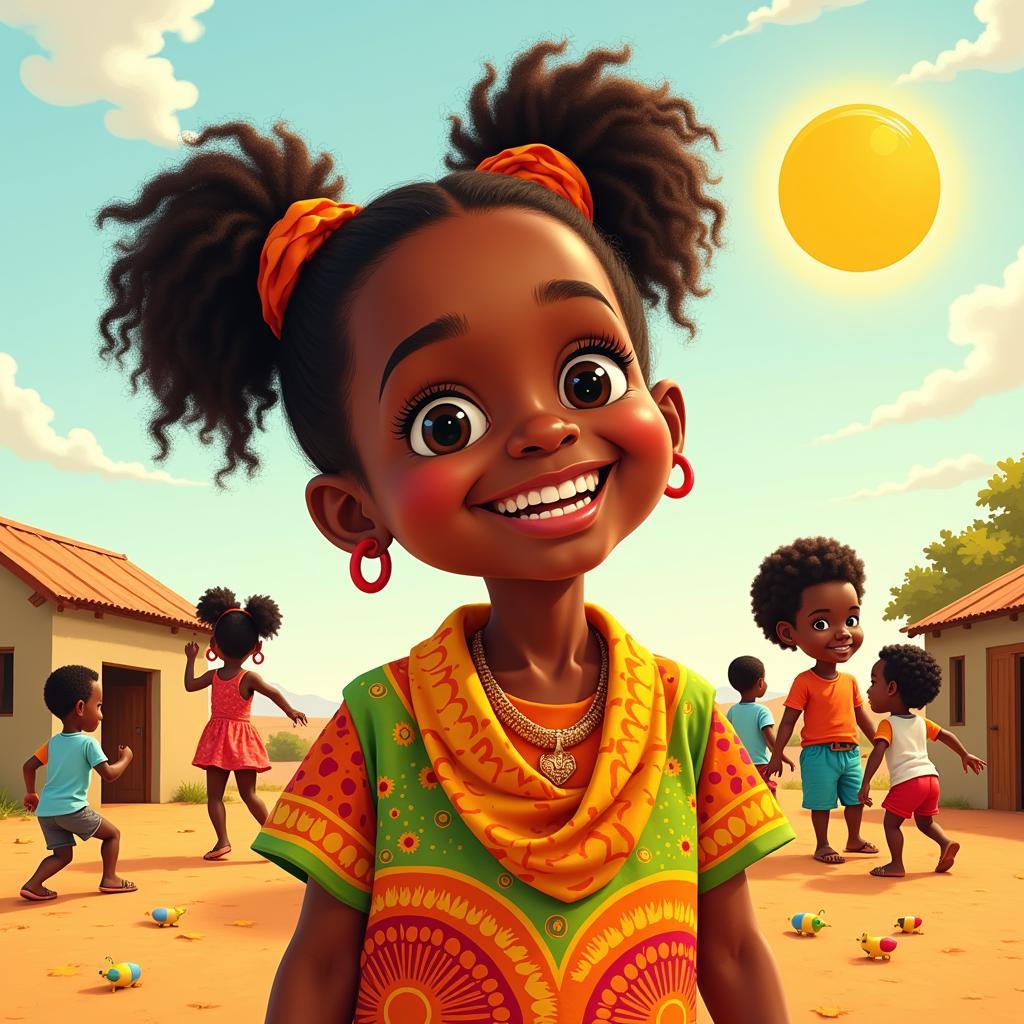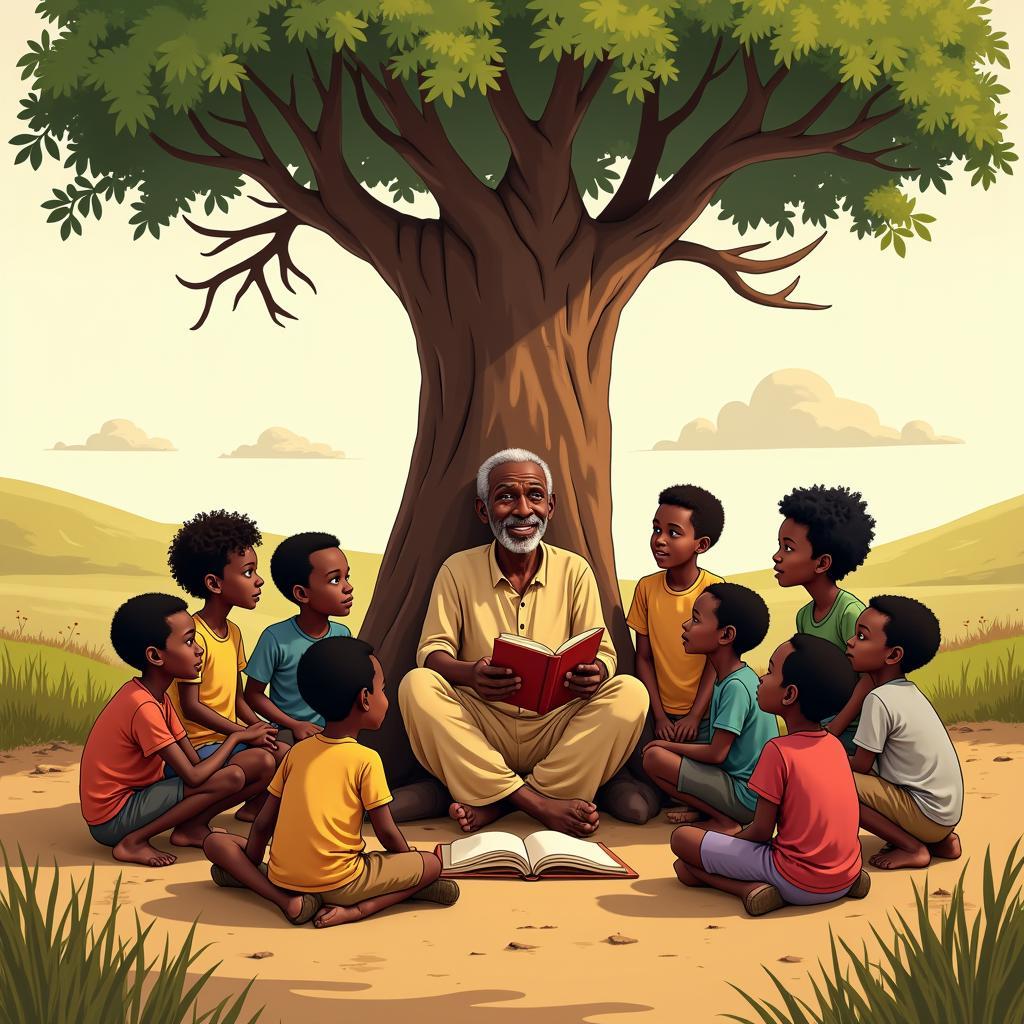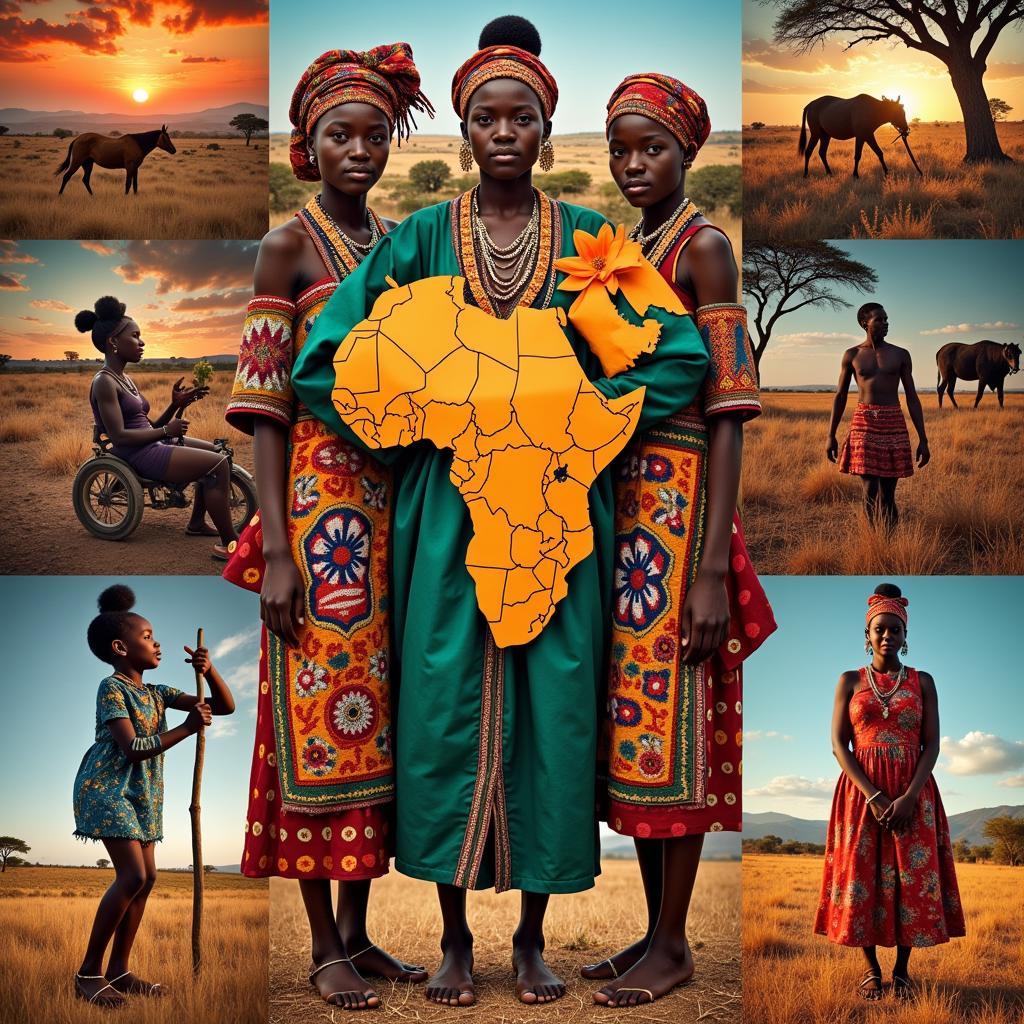The Power of Expression: Understanding African Child Illustration
The captivating world of “African Child Expression Illustration” reveals a vibrant tapestry of emotions, experiences, and aspirations unique to the African continent. More than just pictures, these illustrations serve as a powerful lens through which we can begin to understand the rich inner lives of African children.
A Celebration of Diversity: Styles and Meanings
African child expression illustration encompasses a wide range of artistic styles, each carrying its own cultural significance and visual language. From the bold strokes of Ndebele murals in South Africa to the intricate patterns found in traditional West African textiles, illustration styles are as diverse as the continent itself.
 African Child Illustration: Joy
African Child Illustration: Joy
These illustrations often go beyond merely depicting physical appearances. They delve into the emotional landscape of childhood, capturing the essence of joy, wonder, resilience, and sometimes, even hardship.
For instance, the use of vibrant colors might symbolize hope and optimism, while more muted tones could reflect the challenges faced by some communities. Symbolic elements drawn from nature, folklore, and daily life further enrich these illustrations, adding layers of meaning that resonate deeply with viewers.
More Than Meets the Eye: Unpacking Symbolism
To truly appreciate African child expression illustration, it’s crucial to understand the symbolism often woven into the artwork. Animals, for example, frequently feature in these illustrations, each carrying a specific meaning. The lion, often associated with strength and courage, might represent a child’s potential. A soaring bird could symbolize freedom and aspiration.
 African Child Illustration: Storytelling
African Child Illustration: Storytelling
Similarly, patterns and motifs carry cultural weight. Geometric designs, prevalent in many African cultures, may represent order and community, while intricate spirals can symbolize growth and the cyclical nature of life. By deciphering these symbols, we gain a deeper understanding of the cultural context and the artist’s intended message.
Giving Voice: The Importance of Representation
In a globalized world often dominated by Western narratives, African child expression illustration plays a vital role in providing authentic representation. It allows African children to see themselves reflected in art, celebrating their unique identities and experiences. This representation is not only empowering but also crucial for fostering a sense of belonging and self-esteem.
Furthermore, these illustrations offer a window into African cultures for a wider audience. They challenge stereotypes, promote cross-cultural understanding, and highlight the universality of childhood experiences. Through the power of visual storytelling, they build bridges of empathy and appreciation.
A Legacy of Creativity: Past, Present, and Future
African child expression illustration has a rich history, deeply rooted in traditional art forms passed down through generations. Today, contemporary artists are building on this legacy, incorporating modern techniques and perspectives while staying true to the essence of African storytelling.
From children’s books to public murals and digital art, these illustrations are finding new platforms and reaching wider audiences. As we move forward, it’s vital to continue supporting and celebrating the work of African artists, ensuring that the voices and experiences of African children are heard and appreciated worldwide.
In conclusion, “african child expression illustration” offers a captivating glimpse into the hearts and minds of Africa’s youngest generation. By appreciating the diverse styles, deciphering the rich symbolism, and recognizing the importance of representation, we can learn valuable lessons about resilience, joy, and the power of creative expression.
FAQs
1. What are some common themes found in African child expression illustration?
Common themes include family, community, nature, folklore, dreams, and the challenges and triumphs of daily life.
2. Where can I find examples of African child expression illustration?
You can find examples in children’s books, online art galleries, museums, and cultural centers dedicated to African art.
3. How can I support African artists working in this style?
You can support them by purchasing their artwork, sharing their work online, and promoting their exhibitions and events.
Need help or have questions about African art and culture? Contact us!
Phone: +255768904061
Email: kaka.mag@gmail.com
Address: Mbarali DC Mawindi, Kangaga, Tanzania
Our team is available 24/7 to assist you. You can also explore other articles on our website for more insights into the diverse world of African Life.

